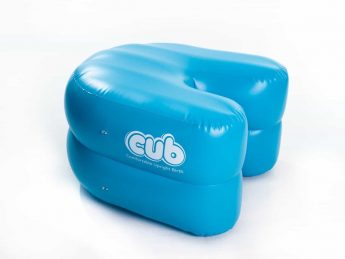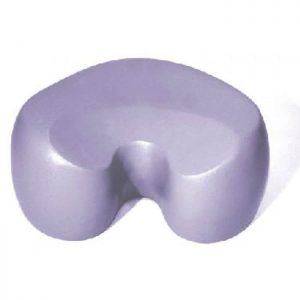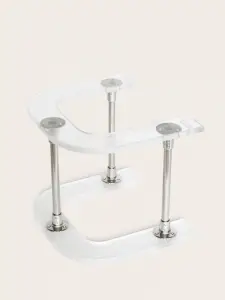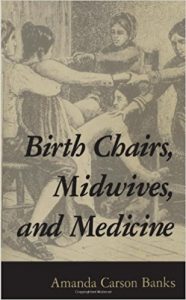Show Contents
Hide Contents
Giving birth might be painful but it is the most magical, memorable, and meaningful event of a woman’s life. Practices related to giving birth, are, therefore, definitely important to every mother’s health and well-being. These practices, of course, are important for the successful outcome of her pregnancy and labor. Ever since the medieval times up to now, birthing chairs or parturition chairs have played a significant role. Most especially when it comes to the experience of giving birth. Birthing chairs were so famous during the olden times. It is because of the reason that giving birth in an upright or horizontal position was extensively practiced. This article would be of great help if you are considering to use a birthing chair. If you are someone who is just interested to learn more about birthing chairs, then don’t hesitate to read on.
What is a birthing chair?
A birthing chair is also referred to as a parturition chair or birth chair. It is mainly a tool or device to aid a woman during childbirth and labor. This particular chair allows women to be squatting while giving birth. It is specifically shaped to help women to give birth in an upright posture and horizontal manner. This chair is not just a chair for anyone to sit on. It holds a more important function of providing support and balance for mothers in giving birth.
Appearance-wise, the birthing chair just looks like a chair with sets of legs, maybe 3 or 4. Except that it has a hole or a space on the center part of the seat to allow a midwife or a birthing assistant to clearly monitor the labor progress and gives space for the baby to slide through. These chairs should be sturdy enough to bear up to a substantial amount of weight and pressure as well. It is also built only up to a certain height, not too far from the ground, for the woman to plant or brace her feet firmly averse the ground for a more powerful push. They commonly have armrests or handles where mothers can grip or hold on to for extra leverage.
Nowadays, birthing chairs are not typically found and used in the hospital. They are often used at a birthing center or when you are giving birth at home. Some women still prefer the use of birthing chairs or incorporating the principle of the parturition chair method because they find that it can make delivery a lot easier. According to Dr. Harper, squatting position helps the mother push the baby out more forcefully and you’re allowing gravity to help bring the baby down to the right position. It also helps open your pelvis up.
Modern birthing chairs
The reason why many women still prefer the use of birthing chairs is that because being in an upright position can help the baby to be in the best and easiest position for birth, making more space within her pelvis than if she is semi-sitting or lying on her back on a bed. You can bring and use these birthing chairs or stools at a maternity hospital, a clinic, or during a home birth. Two famous products to provide an upright birth position are the Kaya Stools Deverra Birth Stools, and CUB.
The Modern Birthing Chairs
1
C.U.B.
The product name CUB stands for Comfortable Upright Position. Instead of the usual wooden and leather birthing chairs, the CUB is an inflatable version. It is a comfortable, versatile and easy to use the support that can help mothers maintain the upright position when giving birth. Each of these inflatable birth stools includes a manual inflation pump, terry cotton cover, and a carrier bag for portability. The CUB is created and designed with double thickness on the top and durability at the bottom to prevent puncture. It has multiple functions that could help a mother during labor. It can be used throughout as a comfortable support, either to sit on, rest on or lean over. The CUB also functions to give birth in an upright position in the most comfortable way for you.
CUB allows you to have more effective labor contractions. This also helps you adopt and maintain positions that are not only comfortable but physically helpful for you and your baby during labor. This inflatable birthing stool totally makes giving birth easier, faster and super safe. The CUB promotes natural birth positions and can be used in late pregnancy. It can also be used during labor and after the delivery of your baby.
Related: after a beautiful delivery, if you are looking to boost up breast milk production as much as possible, you can use these lecithin supplements or these magnesium taurates
Key Features:
- Comfortable and versatile support
- Inflatable
- Suitable for maternity hospitals, clinics, and at home
Specification:
2
Kaya Birth Stool
This modern birthing stool can be used in different ways and settings of giving birth in an upright position. The Kaya stool is crafted with a low density, food-grade material called polyethylene. It has no phthalates or other harmful additives. Dioxins and other unsafe chemicals were not released into the environment in the production process. This birth stool allows women to respond to their body throughout the labor process based on what makes them comfortable.
The Kaya stools are available for both personal and professional use. These stools allow women to be in an upright position during labor. The positions include squatting, kneeling, lunging, and rocking. They can increase the available space within the pelvis and stimulate more effective contractions. They were also proven to yield the best health outcomes for you and your baby. The Kaya Stool may be used at home for continued stretching and strengthening as your body recovers after birth. Later on, it can then be used as a playful piece of children’s furniture.
Key Features:
- For hospital and home use
- Human-centered design
- Can be used even after birth
Specification:
3
Deverra Birth Stools
The Deverra birth stools are handmade by women in Toronto. The design basically pays homage to traditional birth stools, while meeting the needs of modern women and midwives. They look like beautifully crafted wooden seats made to provide comfortable support. The elegant acrylic bases are very durable and easy to clean. Legs and hardware are made from high quality, 316 marine grade stainless steel. The acrylic seats of this birth stool make them ideal for submersion during water births. It also makes them ideal to be used in an institutional setting. Made for convenience, the entire stool is easy to disassemble with a few turns of an Allen key. All Deverra stools come with a canvas shoulder bag for easy transport. Once taken apart, the whole stool can be easily kept inside.
Key Features:
- Modern and aesthetic design
- For midwives, birth centers, hospitals, and home
- Handmade and sturdy, can be submerged in water
Specification:
History of birthing chairs
1450 BCE
 The first use of a birth chair can be followed back to ancient times in Egypt. Pictures can be seen carved on the walls found in birthing houses of Egypt. These pictures depicted the Queen of Egypt in labor using a birth stool. Most Egyptian noblewomen are often assisted by maidservants. Their birthing chair looks mostly like a short stool just to support during labor.
The first use of a birth chair can be followed back to ancient times in Egypt. Pictures can be seen carved on the walls found in birthing houses of Egypt. These pictures depicted the Queen of Egypt in labor using a birth stool. Most Egyptian noblewomen are often assisted by maidservants. Their birthing chair looks mostly like a short stool just to support during labor.
200 BC

Usage of birthing chairs was also documented and traced in Greece. It was displayed through an ancient Greek sculptured votive.
100 BC
Celtic items or devices from Britain have been also found to depict women giving birth in an upright position with the same principle as to what a birth chair uses.
17th Century
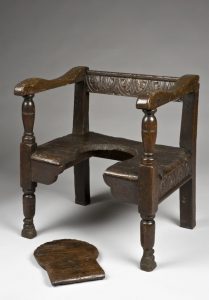
From ancient times, until the 17th-century birthing chairs that look more like stools have been used. Most of the birthing chairs used during this time were made to be simple and a lot shorter than the ones used during the 18th Century. Although some of them came out with a padded seat, mostly are still crafted as a plain wooden birthing stool.
18th Century
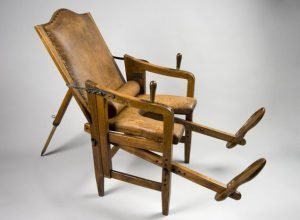
During the 18th century, modifications were made to the traditional and ancient birthing stools. Lying-in clinics became famous during this era, that is why the birthing chairs made during this time were designed with seats that allowed women to sit upright or recline during labor. These chairs are also found to be more comfortable because it has padded seats and leg rests some of which are even extendable. Although the simpler versions from the 17th century were still used during this time.
19th Century
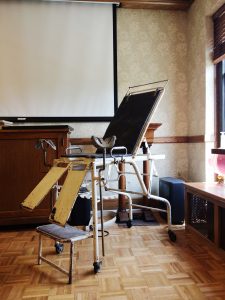
As mentioned, lying-in clinics became famous in the 1800s but during the late 1900s, these ancient birthing chairs have returned in the new methods of giving birth. Quite a number of pregnant women came back to the use of the birth chair for the upright position it provides since it helps a lot because gravity can assist the baby to come out easier. Ever since the 1980s, numerous clinics and birthing centers have started putting in birthing chairs because of the huge amount of queries about these devices. The birthing chairs during this time looked a lot more like hospital equipment instead of the homey design the usual birth stools used to have. During the 1930s, wooden birthing chairs were also found to have originated from Africa.
20th Century
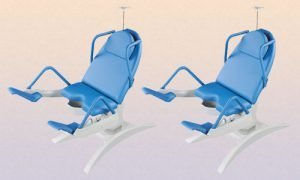
Although C-section has been dated to be used back to ancient times, it has become ultimately practiced during the late 1900s. And in these modern days, most childbirth and delivery has been happening in hospitals and the procedures have been carried out by obstetrician-gynecologist. Still, many women who do not need a C-section, prefer upright birth position because it tends to be a lot easier. Modern birth stools are available in the market today and they can be used even at home under the supervision and assistance of a midwife or any healthcare professional.
Book about Birthing Chairs by Amanda Carson Banks
If you want to read more about the history of these very captivating birthing chairs. You can get this book from Amazon, and it is truly a good read to provide you with some interesting and additional knowledge. Available in Kindle, paperback, and hardcover
Book information: This book shows and details the history of the birthing chair and shows how this material changed and developed over time. Amanda Carson Banks, the author, illustrates these changes through pictures, sketches, interviews, and statements from early midwives and obstetricians. She has successfully created a magnificent book that shows the evolution of birthing methods while highlighting the process of birth and labor over the last two hundred years.
The use of birthing chairs has been revived during the 20th century as the scuffle between medical and alternative birth movement has developed. As the author walks through her thorough study and observation of the birthing chairs, many answers were given and justifications were made. With the use of the artifacts from different birthing homes to hospitals, Banks was able to masterfully trace and learn changes, whether they are societal or philosophical, on the methods of bringing life to the world.
Benefits of upright birthing
1. Gravity really helps. Standing while in labor lets you assist the baby in having the movement down towards the cervix for delivery. The head of the baby will aid in applying pressure on the cervix which will then result in dilation.
2. When you stand or squat, you are able to widen your pelvis. This will then be easier for the baby to move through the pelvis or pelvic area for labor. If you push in a standing position or upright, you will also be able to have a wider vaginal outlet.
3. Upright birthing will also lessen labor pain. Majority of women suffer from back pain throughout the labor, this can become worse if you spend too much laying down. Getting up and moving around plus massages will truly help ease the labor pain.
4. Give birth in less time. Labor can be a lot quicker if you’re positioned upright and if you are moving. There will be better oxygen distribution to the muscles around the uterus and for baby since your vessels will not be compressed. This will help the uterus to have more forceful contractions. Labor will be less stressful.
5. It will be an easy downhill. You will be working with gravity, it would mean that the necessity for help will be lesser. If you are pushing “downhill”, you will be utilizing your muscular system to optimal work, so you can avoid becoming more exhausted in pushing. Because of this, you will be needing lesser to no interventions at all.
Giving birth is magical
Childbirth or giving birth is a very unique and fulfilling event in a mother’s life. It is also a very unique experience that exhibits the miracle and power of nature. According to Dr. Northrup, giving birth is the real “change of life” and women who go through giving birth with full support often emerge from the experience has changed for the better.
When choosing your method of giving birth, there is no right or wrong. Whether you choose to do it upright or lying down. Or, whether you choose to give birth at home or at a healthcare facility, it is always up to you. What is important is that you remain confident about yours and your baby’s health. Giving birth, in itself, is just a physiological event, yet it is also is one of the most fascinating and magical aspects of medicine. And it is an event that will truly change a mother’s life forever.


